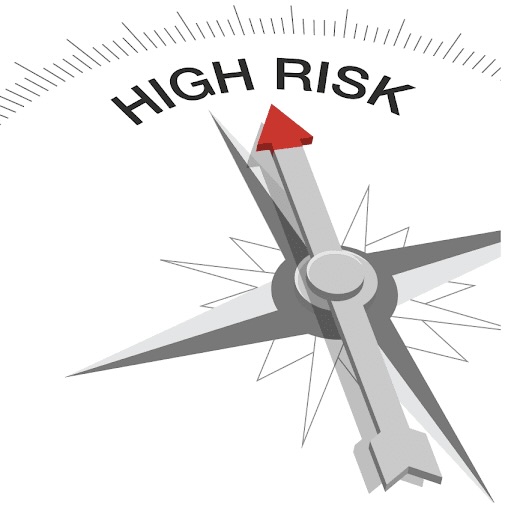If your business or sector is considered risky, you’ll have a hard time having a regular account with most acquirers. Usually, most enterprises will be required to use a high-risk merchant account, which comes with a slew of limitations and higher transaction fees.
Another repercussion that high-risk businesses should be mindful of is chargeback thresholds. When low-risk merchants participate in a card network’s chargeback monitoring program, they usually have more time and flexibility to fix the issue.
On the other hand, high-risk merchants are automatically fee-eligible, which means that they will be charged unfair fees for each month they stay in a chargeback monitoring scheme.
What does it mean to be a high-risk merchant?
There are no clear criteria for categorizing companies as high-risk merchants, unlike low-risk merchants, since various payment processors use different criteria. However, most Card-not-present retailers are considered high-risk from a business viewpoint.

E-commerce shops, Forex, gaming, financial services, travel, and several other businesses fall under this category.
So, if you want to open a forex merchant account for your foreign exchange trading website, you should expect to be classified as a high-risk merchant by the payment processing service.
Here are some eCommerce tips for a high-risk business account:
Be Transparent and Honest:
There are many aspects to consider during the application process for a high-risk merchant account, but transparency is most important. It’s essential to keep the financial reports, tax documents, permits, and everything else needed to operate a company in order.
Your files would be scrutinized more than they would be if you were a regular retailer, so don’t make any hasty decisions.
Do Not Strive For A Higher Volume:
For the first few months of operating with your high-risk provider, you’ll have a lower-than-average processing capacity, and the prices would be less favorable than if you worked out of a physical location (since businesses making in-person sales are generally deemed lower risk than ones online). That’s fine. If you don’t want to be manipulated by a payment processor, bear in mind that you have little control in the early stages of a relationship.
It would be best if you pressed for a higher volume after a half-year of stable, straightforward business operations. You’ll be able to renegotiate the prices later on. You’ll be in a great place to keep your merchant services and even make them work better for you if you have a little patience and a growing positive track record.

Apply Provider or Third-Party Software
When you sign up for processing, most merchant services providers—especially those that specialize in high-risk processing—will have some chargeback management system. Be sure to inquire about it!
It’s essential to respond to chargebacks quickly, and processors will also assist you in resolving these issues with customers. Please make sure you’re familiar with the chargeback options they have so you can use them comfortably when the time comes.
Unfortunately, no app can defend you from any fraudster with a high-risk merchant account. However, technology will assist you in combating friendly fraud and maintaining a good ratio. It is in your best interest to use it.
Be Aware Of the Best Practices
As a company owner, it’s crucial to understand commonly accepted best practices for reducing chargebacks so that you can teach them to your staff. Here are a few examples:
When you have evidence in your favor, you will battle chargebacks.
Ensure that your brand is readily visible on consumer credit card bills and receipts.
Sending emails to consumers as soon as possible after they make a purchase (with a receipt attached)
Rather than allowing chargebacks to accumulate, handle them as soon as possible.
Some astute business people have taken caution to the next level, asking consumers to sign an e-form or even fax their signature before continuing with a transaction. This is a possible tactic you can use to defend yourself if you’re concerned about people committing credit card fraud.
Establish a Presence On Social Media
You don’t need it down to a Pinterest account for your business, but a personal LinkedIn profile and a company Facebook page are a good start. Even setting up a Twitter account to increase your brand’s exposure can be beneficial if used correctly.
You won’t have the same social media exposure as large corporations. However, if you show some personality on your social media pages (while still promoting your products and having your name out there), you can start building a solid brand.
Plus, seeing you’re involved on these sites will convince customers who are searching for your company online before clicking the “Buy” button.
Chargebacks and fraud potential are, in general, two of the most critical factors used to classify companies as high-risk. Your company would most likely be listed as a high-risk retailer if it receives many chargebacks or is too vulnerable to fraud attacks.
Simply put, the higher the number of chargebacks on your eCommerce store, the greater the risk.




